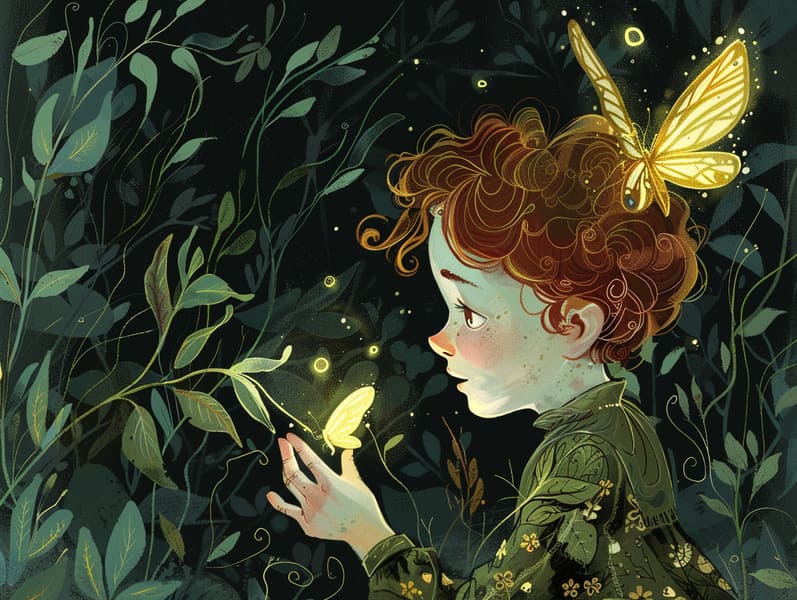The Formation of Popular Fairy Tales and Its Unwavering Attraction.
The Formation of Popular Fairy Tales and Its Unwavering Attraction.
Blog Article

Traditional fairy tales have timeless appeal. These stories have been spoken from one generation to the next ages before they were ever documented. They sprang from a variety of traditions, including Indigenous traditions. They were initially disseminated among elders, often carrying themes and messages concerning the societal norms and beliefs of the time.
The Brothers Grimm, Jacob and Wilhelm Grimm, were among the first to compile and publish many of these beloved fairy tales. Their anthology, "Grimm's Folk Tales," included narratives like "Cinderella," "Hansel and Gretel," and "Snow-White and Rose-Red," which have since become staples in the world of famous fairy tales. Similarly, Hans Christian Andersen's enchanting fairy tales, such as "The Mermaid," and "The Ugly Duckling," have captivated hearts worldwide, solidifying their place in the pantheon of treasured fairy tales.
Despite their ancient origins, these tales remain as significant as ever, especially as children's bedtime stories. These magical stories are now available in multiple formats, including colorful picture books, magical animations, and free fairy tales online.
Their ongoing significance can be linked to several charming aspects:
Valuable Lessons: Ancient fairy tales often present important moral lessons. Fairy tales like "The Shepherd Boy and the Wolf" teach the significance of truthfulness, while "The Tale of the Tortoise and the Hare" demonstrate the virtues of steadfastness and unassuming nature. These narratives offer kids clear distinctions between moral and immoral, shaping their moral compass in a kind yet lasting way.
Compassion and Insight: Ancient fairy tales frequently illustrate beings facing challenges and problems, urging listeners to empathize with their struggles and cheer for their triumphs. For instance, "Beauty's Beast" reveals the virtue of appreciating inner worth to understand the inner self of a person, strengthening kindness and recognition.
Cultural Comprehension: Many ancient fairy tales are infused with the cultural contexts from which they developed. Learning from these narratives can provide captivating looks into different backgrounds, enhancing a sense of global insight and discernment.
Creativity and Imagination: The imaginative elements in old fairy tales—enchanted forests—boost children’s creative thoughts. These narratives bring readers to enchanted realms, kindling fantasy dreams and a sense of excitement that lasts a lifetime.
Ancient fairy tales are not only fascinating but also didactic. They serve as enchanted tools in building various cognitive and emotional skills in the young. When fairy tales are spoken, they improve communication skills by introducing new terms and detailed sentence structures. This practice also fosters hearing abilities and mental focus, as the young concentrate deeply, keen to see what happens next.
Furthermore, talking about the themes and characters of traditional fairy tales can nurture analytical skills and critical thinking. Little ones are shown to see patterns, expect results, and grasp cause and effect. These reflections also facilitate children speak out their thoughts and feelings, advancing their emotional intelligence.
In today’s modern era, the presence of online fairy tales has made these narratives more attainable than ever. Internet resources and web apps share extensive collections of popular fairy tales that can be browsed or listened via anytime, anywhere. Fairy tales read out loud are particularly well-received, giving an charming way for the young to take part in these bewitching tales. Sound books and read-to-me stories carry characters and settings to life, often supported by enchanting soundtracks and songs that heighten the narrative experience.
The persistent attraction of old fairy tales lies in their ability to evolve to changing times while continuing with their core values. Contemporary renditions of these narratives often include more multicultural protagonists and modern settings, making them familiar to today’s audience. However, the key lessons of valour, generosity, and integrity remain unchanged, continuing to reach young listeners of all ages.
Classic fairy tales also offer a sense of security and knowability. They offer a organized narrative with a definite beginning, middle, and end, often closing with the solving of conflicts and the triumph of good over evil. This foreseeability can be calming for kids, spreading a sense of dependability in an ever-changing world.
Ancient fairy tales continue to captivate and coach new generations, maintaining their delight and applicability in modern society. As children's bedtime stories, they impart upon a perfect blend of magic and knowledge, backing moral values, empathy, and creativity. The availability of internet fairy tales and the favor of fairy tales read out loud ensure that these classic tales remain acquirable to new generations.
By protecting and broadcasting these tales, we continue to admire check here the rich tapestry of myths and cultural heritage. Whether you are accessing a beautifully illustrated book, perusing a digital collection, or playing an spoken story, the loveliness of bedtime fairy tales is always within reach. These stories emphasize of the invariable presence of narratives and its ability to join us across generations and cultures.
Be it you are enjoying a colorful picture book, delving into a internet collection, or listening through an narrated book, the mystique of famous fairy tales is always within reach.
These narratives demonstrate of the lasting presence of tales and its ability to unify us across epochs and places, casting a charm that delights and instructs alike.